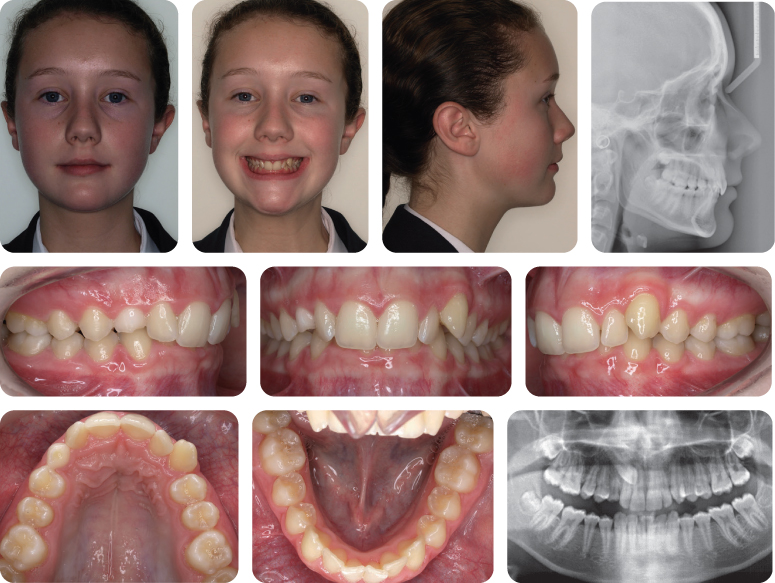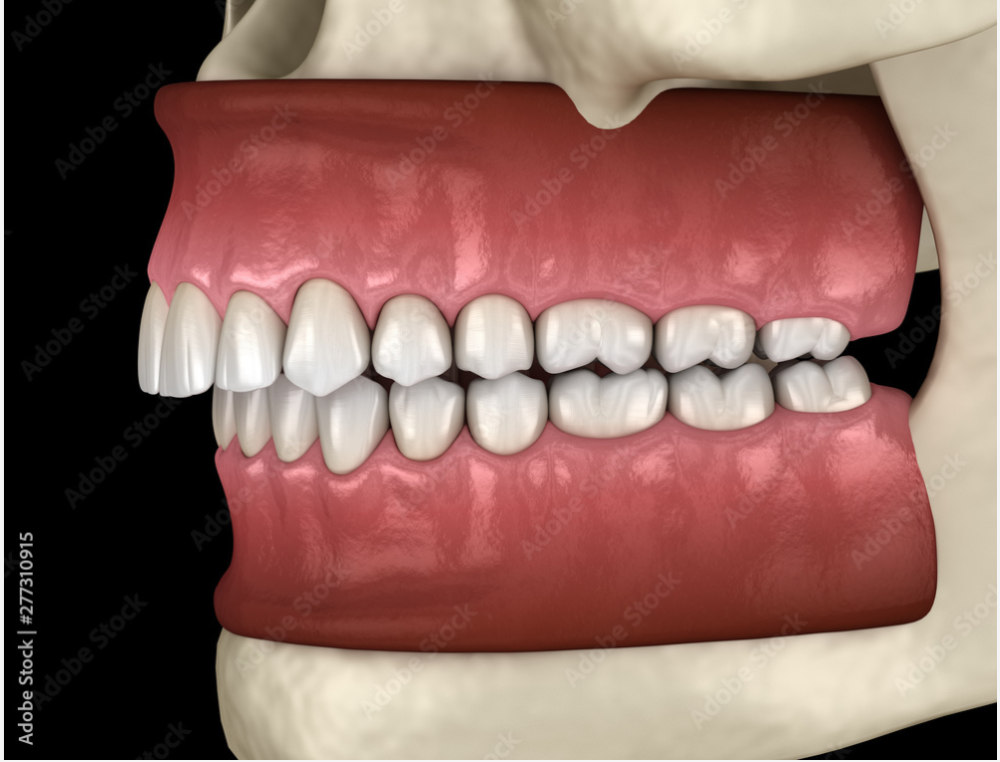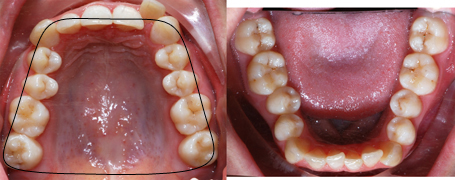class ii division 2 subdivision
However it was also explained that Class II Division 2 subdivision left and anterior deep overbite are contributing factors to increase the pain and discomfort in TMJs. Brezniak 8 identifiedpathognomonic cephalometric.

Up 1373 Union Pacific Emd Gp40p 2 At Colorado Springs Colorado By Dusty Thomson Union Pacific Train Railroad Photography Union Pacific Railroad
Class II Division 2 subdivision le n ormal overjet an- terior deep ov erbite with a deep mandibular curve of Spee and extruded mandibular incisors and canines.

. Authors Oscar Mario. Deep bite retroclined maxillary incisors and a posteriorly positioned mandibular dental arch. Malocclusion Angle class II subdivision 710782002 Definition.
Class II subdivision represents 50 of all Class II malocclusions with responsible primary factor being a deficient mandible caused by either a reduced height of the ramus or a reduced length of the mandibular body on the side of the Class II. The discrepancy between the upper and lower teeth does not match the discrepancy between the upper and lower teeth where the molars and canines are located red and blue arrows. Class II locations are divided into three groups EFG.
The class II division 2 differs from division 1 by the following characteristic. 1 Flat mandibular plane 2 Increasesd posterior facial height 3 Short lower anterior facial height resulting in both upper and lower lip having a more everted. Class 2 Division 2 also commonly written with a Roman numeral Class ii Division 2 represents an area where combustible dust may be present in quantities sufficient to ignite or explode.
Accounted to dental and occasionally to the s keletal disharmony. Class II subdivision malocclusions were grouped into 3 main categories. Class II Division 2 Subdivision Malocclusion in an Adult Patient treated with the Forsus Fatigue-resistant Device placed Unilaterally Contemp Clin Dent.
Class Ii Division 2 Malocclusion 5 Class Ii Division 2 Malocclusion Pocket Dentistry 5 Class Ii Division 2 Malocclusion Pocket Dentistry 12 Nonextraction Class Ii. Prologue Patients with Class II subdivision malocclusions have Class I characteristics on one side and Class II characteristics on the other primarily because of the distal positioning of the mandibular first molar in relation to the maxillary first molar on the Class II side. The ignition temperature of the dust the electrical conductivity of the dust and the thermal blanketing effect the dust can have on heat-producing equipment such as lighting fixtures and motors.
With these clarifications the patient decided to undergo orthodontic treatment to improve his dental occlusion and affirmed that he was fully aware that orthodontic treatment could have no effect. 3 Mandibular plane to Frankfurt horizontal angle. The maxillary incisor display at rest was 4 mm the upper dental midline was 3 mm to the left of.
Class II Division 2 subdivision left malocclusion associated with anterior deep overbite in an adult patient with temporomandibular disorder. 1 All of the above criteria as stated for the Class II1 group. Class II division 2.
Characteristics of the II2 malocclusion are well-documented. 2 Maxillary central incisor to Sella-Nasion line. The patient demonstrated an Angle Class II Division 2 subdivision left malocclusion with anterior and posterior crossbites.
Angle 1 recognized a subset of the Class II malocclusion the Class II Division 2 II2 type which exhibited a distinct triad of features. The largest category was mandibular asymmetry. Class II location groups are determined by.
4 Overjet 4 mm. Ive been reading a lot on article 502-115 502-145 and speaking to the local authorities on the requirement for receptacles around wood working equipment. The shop in question has a very large dust collection system and a standard cleaning system in place.
For the Class II Division 2 subdivision group included. Interesting trends were noted with regard to treatment strategies midline and molar corrections and mandibular incisor proclination. The mesiobuccal cusp of the maxillary first molar occludes mesial to the buccal groove of the mandibular first molar usually near the embrasure between the mandibular molar and second.
Several articles have investigated and discussed the development of this asymmetric molar relationship in Class II subdivision cases28 According to results derived from two-dimensional imaging studies. A distal placement of the mandibular molar a mesial relationship of the maxillary or a combination of the two. 5 Nov 22 2013.
See ANSIISA 121201-2000 Nonincendive Electrical Equipment for Use in Class I and II Division 2 and Class III Divisions 1 and 2 Hazardous Classified Locations and UL 1604-1994 Electrical Equipment for Use in Class I and II Division 2 and Class III Hazardous Classified Locations. Patients with Class II subdivision malocclusions have long been a treatment challenge for clinicians1 2 Treating asymmetric malocclusions is inherently more difficult than treating symmetric malocclusions since symmetry in 1 arch or both arches must be reestablished usually with asymmetric extractions mechanics or surgery. The upper incisors are tipped backward and hide the fact that the lower jaw.
A class II division 2 malocclusion is a subdivision of the Angle class II classification and is defined by a class II division 2 incisor relationship with the incisal edges of the mandibular incisors occluding posterior to the cingulum plateau of the maxillary central incisors which are retroclined. Class 2 Division 2 also commonly written with a Roman numeral Class ii Division 2 represents an area where combustible dust may be present in quantities sufficient to ignite or explode. Angle1 described the Class II subdivision as a separate group of Class II malocclusions characterized by a unilateral Class II molar relationship.
Class II Subdivision refers to the asymmetric molar relationship that can be commonly. In most patients with Class II subdivision malocclusion the maxillary dental midline is. Skeletal Class II division 2 Mandibular deficiency Class II div 2 with a small mandible the decreased size is localized more to the mandibular body Mandibular Ramus is of normal lenght Cephalometrically.
Dust may be suspended in the air in quantities sufficient to ignite under abnormal operations or when combustible dust accumulations are insufficient to interfere with the. He had normal vertical facial proportions a straight profile and a protrusive lower lip due to a pseudoprognathic mandible. Class II Div II receps in cabinet shops.
Categorization as a Class II subdivision required at least a half-cusp difference between the right and left sides.

Class Ii Division 2 Subdivision Malocclusion In An Adult Patient Treated With The Forsus Fatigue Resistant Device Placed Unilaterally Antelo Om Bosio Ja Saga Ay Meira Tm Tanaka Om Contemp Clin Dent

Class Ii Division 2 Subdivision Malocclusion In An Adult Patient Treated With The Forsus Fatigue Resistant Device Placed Unilaterally Antelo Om Bosio Ja Saga Ay Meira Tm Tanaka Om Contemp Clin Dent

Class Ii Division 2 Dr Sylvain Chamberland Orthodontiste

Pin On Wwii Helmets M1s With Graffiti

978 620 2 79766 5 In 2021 Orthodontics Dental Health Dentistry

5 Class Ii Division 2 Malocclusion Pocket Dentistry

What Is A Class 2 Malocclusion Dental Information
Class Ii Division 2 Subdivision Left Malocclusion Anterior Deep Bite And Tmd

Pin On Wwii Helmets M1s With Graffiti

5 Class Ii Division 2 Malocclusion Pocket Dentistry

Class Ii Division 2 Dr Sylvain Chamberland Orthodontiste

What Are Scale Balance Accuracy Classes Divisions What Is Scale Class Division

Class Ii Division 2 Dr Sylvain Chamberland Orthodontiste

Taffgoch 3d Warehouse Paper Lamp Novelty Lamp Dome House

Draw Emotional Line The Relationship Of Line To Emotional Response Composition Art Art Worksheets Elements Of Art


